Yngvi-Freyr’s mysteries are profound, and in a series of essays I’ll propose what I believe is a new theory of his role and purpose in Old Norse mythology; one that places him at the very centre of that cosmology.1
According to the chronicler Snorri Sturluson, Yngvi-Freyr was ‘the most renowned of the Æsir’, above even Óðinn. Yet he is one of the more misunderstood gods, and one of the most misrepresented. Look, for instance, at how Fjölnir the Brotherless – a disciple of Yngvi-Freyr – is portrayed in the movie The Northman: corrupt, amoral, without honour. See also how Freyr’s priests were roundly disparaged by Saxo Grammaticus for their – admittedly odd – disgusting effeminacy (even Julian Cope has a dig). As an Ingvarðr I am probably biased but, in contrast to Óðinn and Þórr, Freyr gets a bad rap.

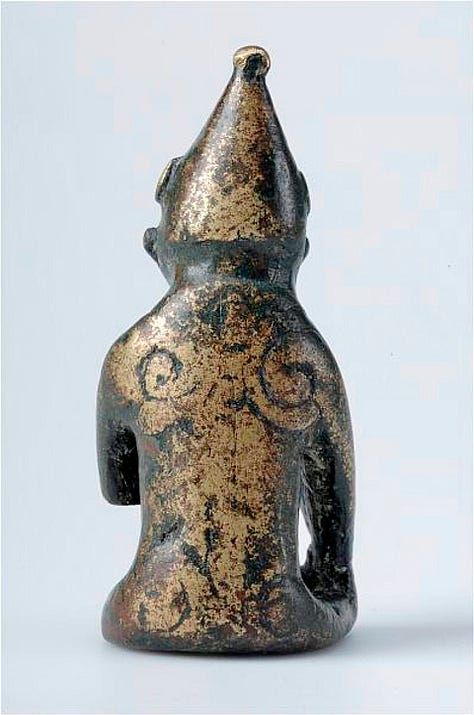
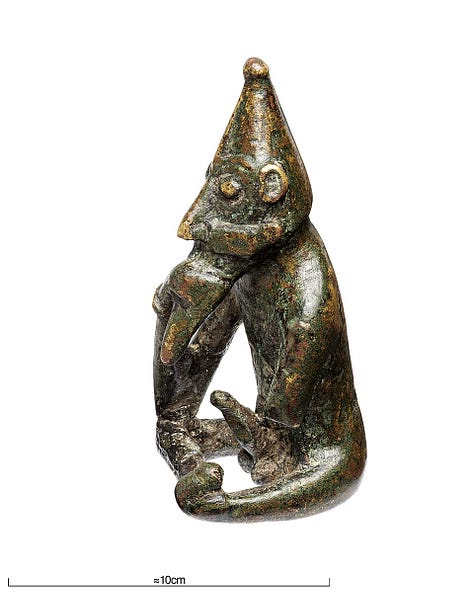
The Ithyphallic Freyr
Image is partly the problem. The Viking-era Rällinge statuette depicts Freyr endowed with an enormous, engorged phallus. And Adam of Bremen describes the great heathen temple at Uppsala as ‘entirely decked out in gold’, containing statues of Þórr in the centre, flanked by Óðinn, and Fricco / Freyr, fashioned ‘with an immense phallus’. Of course, ithyphallic depictions were commonplace in non and pre-Christian traditions. From the fifteen-thousand-year-old cave painting at El Cogul, near Lleida in Catalonia to the Roman god Priapus; from the fascinum charm to the tintinnabulum windchime, phallic objects have always been associated with protection, luck, fertility and prosperity. And these correspondences speak directly to Freyr’s role within Old Norse culture which, as we shall see, from a magickal perspective, was certainly phallocentric. But nonetheless, Freyr’s mix of ‘manly’ and ‘unmanly’ imagery is… odd.
So yes, Freyr is – in part at least – a god of peace, fertility and prosperity. He reappears along with Þórr and Óðinn on the Viking-era Gotland Runestone G181, wielding a sickle, which also hints at his agrarian aspect as a fructifying sun god, and his connections to barley specifically; more on this later.
The Vanir Amongst the Æsir
But let’s first summarise what is known about this contradictory and multi-faceted god. Alongside his sister Freyja, Freyr held the highest position amongst the Vanir – the elder pantheon predating the Æsir. Unlike the aggressive, martial tendencies of the latter, the Vanir were primarily associated with fertility and prognostication; their relationships with the jötnar – the enigmatic race of giants and noted progenitors of Norse magick – was also generally good, in contrast to the Æsir, whose tendency was to destroy as many of them as possible.
In Ynglingatal, Snorri describes how the Æsir and Vanir went to war and, after ravaging the lands, made a truce and exchanged hostages. Freyja, Freyr and their father Njörðr were selected (some observers suggest Óðinn made this choice because of Freyja’s command of the powerful magick known as seiðr, which was unknown to him), and they became honorary members of the Æsir. As evinced by Snorri’s appellation of Freyr as ‘the most renowned of the Æsir’, and his placement alongside Þórr and Óðinn to form a divine triad, he achieved an impressive status.
Freyr the Priest-King
In addition to his powers of bestowing peace, fertility and prosperity, Freyr was also god of kingship, lord of the dead, and ruler of Álfheimr (Elphame) – the otherworld of the elves.2 At first glance this may seem an odd combination, and scholars have struggled to reconcile the kingly and fertilising aspects of his character, but those of you who have read my Goetica Viridia series will recognise Álfar / elves / faeries as chthonians or chthonioi - the ancestral gods of the earth who perform a double function of ensuring the fertility of the land and acting as guardians of the souls of the dead. This is evident in the fact that Faerie / Álfheimr is located literally in the earth, beneath the hollow hills.3 The earth is simultaneously both the bearer of life (the realm of fertility and germination) and the receptacle of death (the place of interment of the dead). Thus, Freyr is cognate with Irish Midir, the ruler of the elfmounds of Brí Léith, who himself may be derived from Roman Dīs Pater – otherwise known as Hades, god of the underworld.
Óðinn additionally made Freyr blótguð svía or lord of blood sacrifices. This is especially important as it conferred on Freyr the status of priest-king or sacral king. A few of my posts on the British Mystery Tradition have elaborated on the two aspects of this role and the pivotal function of this ‘sacral steward’; on how the archetypal priest-king exists to maintain a mutually beneficent concord between the otherworld and this world; between Álfar and human. This pact is maintained by observation of a ritual calendar of sacrifices or blóts to ensure the land’s fecundity, including an ancient, symbolic, sacred marriage between the ‘earth mother’ and ‘sun father’.
On this basis we can see how Freyr’s status as lord of blóts, the dead, Álfheimr and sacral kingship are all mutually beneficent, ultimately working in service to the land’s persistent fecundity, gained through the maintenance of peace and amity; through the union of spirit and matter. These are, after all, Freyr’s chief attributes. We might say that sovereignty, fertility and harmony are his ‘what3words’.
I alluded to the British Mystery Tradition and Freyr is certainly not excluded from it, despite his continental provenance. Quite the opposite; Freyr epitomises its core mysteries and ensures a persistence of tradition also found at the heart of Celtic culture, and of others far earlier.
Njörðr and Nerthus, Freyr and Freyja
A brief examination of his name reveals some significant information regarding Freyr’s ancestry. ‘Freyr’ is an epithet meaning ‘lord’, in the same way that ‘Freyja’ means ‘lady’. Amongst the English, Freyr was known as ‘Ing’, echoing his original Proto-Germanic name, which seems to have been Ingwaz (the legendary ancestor of the tribal group identified by Tacitus as the Ingvaeones.) The Ingwaz rune of the Elder Futhark, explicitly associated with Freyr, is symbolically linked with potential, growth, sex, gestation, fertility and harmony. Amongst some scholars, the rune is also emblematic of the archaic seasonal rites mentioned above, when the male figure sacrifices his masculine powers to the female; significantly, in Old Norse tradition this is represented as a form of castration.4 More on this later.
Freyr and Freyja’s father is Njörðr, and his mother is not identified. However, the name ‘Njörðr’ is a masculine expression of Nerthus, the earth mother goddess venerated by – according to Tacitus – the Germanic tribes the Reudingi, Aviones, Anglii, Varini, Eudoses, Suarini and Nuitones (the Anglii in particular occupied the same area of northern Germany as the Ingvaeones.) The relationship between Njörðr and Nerthus is problematic for scholars, because Njörðr is depicted as originally married to his own sister. Gender ambiguity is a feature of the Vanir and, according to Snorri, this kind of incestuous relationship was ‘customary among this divine clan but forbidden among the Æsir.’5 It is possible therefore that these relationships should be understood symbolically, where Njörðr and Nerthus are male and female aspects of a single hermaphroditic deity, or a divine pair. Njörðr is god of wind and seas, Nerthus goddess of the earth and fertility. Together they represent the union of opposites; a fecund conjunction of polarised but complimentary powers. They may even represent the memory of a primordial era before the separation of sky and earth.
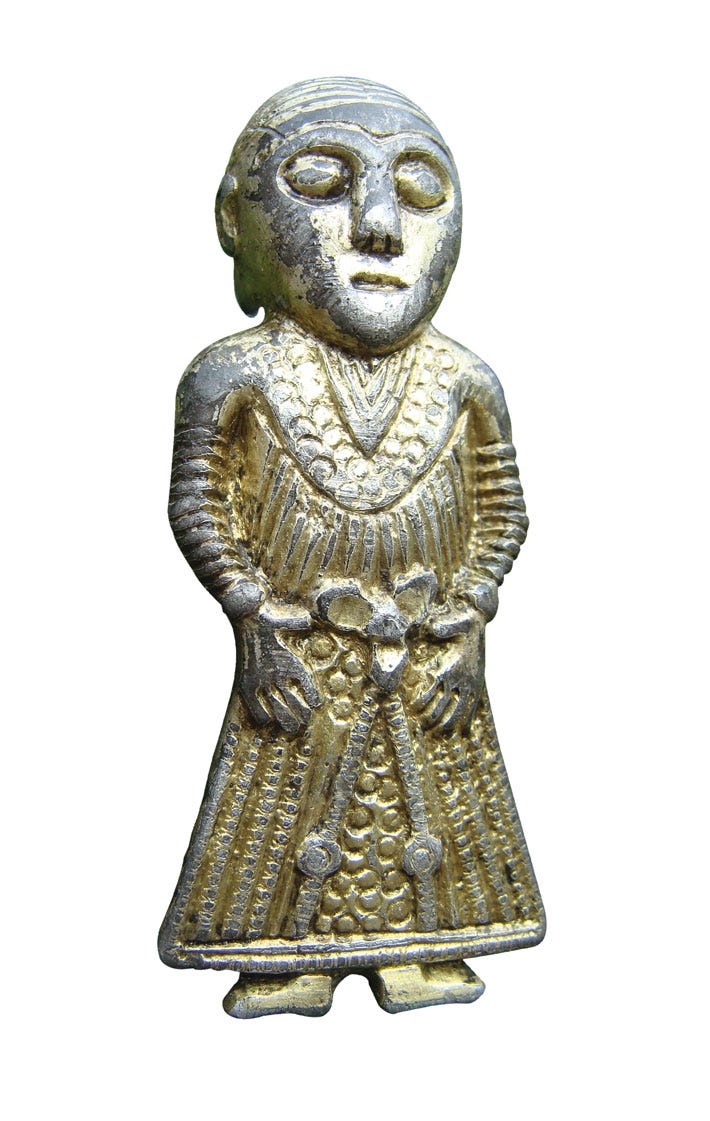
This symbolic interpretation can be extended generationally to Freyr and Freyja. Scholars have speculated that their ‘orthodox’ relationship as twins may reflect a misunderstanding by Christian chroniclers who were unfamiliar with Vanir religious practices. They may in fact be complementary aspects of a single divine principle rather than literal siblings (note the symbolism of the Ing / Ingwaz rune, which illustrates a union of two opposites.) Their names share the same root; both are fertility deities with overlapping domains; and sacred symbols are common between them, not least the wagon and the boar.
The Wagon Cult
The wagon, in particular, is a noteworthy symbol in that it makes the connection between Freyr (and to some extent Freyja) and Nerthus fairly explicit. In relation to Nerthus, Tacitus’s Germania describes how her tribes:
…Believe that [Nerthus] interests herself in human affairs and rides among their peoples. In an island of the Ocean stands a sacred grove, and in the grove a consecrated cart, draped with cloth, which none but the priest may touch. The priest perceives the presence of the goddess in this holy of holies and attends her, in deepest reverence, as her cart is drawn by heifers. Then follow days of rejoicing and merry making in every place that she designs to visit and be entertained. No one goes to war, no one takes up arms; every object of iron is locked away; then, and only then, are peace and quiet known and loved, until the priest again restores the goddess to her temple, when she has had her fill of human company.6
Compare this account to the much later Icelandic text Ögmundar þáttr dytts. The second part of the story describes how Gunnarr helmingr sails to Sweden after being falsely accused of murder. He secures the help of a woman, said to be the wife of Yngvi-Freyr. He joins the woman as she rides through the countryside in a wagon near the end of the year accompanied by a wooden idol representing the Freyr, which is worshipped so much that it is thought to be alive. The purpose of this wagon-circuit is to bless crops and attend feasts. The text describes how:
A young and beautiful woman had been obtained to serve Freyr [as his wife.] It was the faith of the local people that Freyr was alive… and they thought he would need to have a sexual relationship with his wife.
In a nod to this account, one scholar has proposed that, amongst the Anglii and Ingvaeones, a so-called Ing-hypostasis – a man worshipped as Ing / Ingwaz / Yngvi-Freyr – potentially conducted a seasonal wagon-tour and enacted a form of hieros gamos with local women whom he chose to represent Mother Earth.7
A number of European burials support this ‘wagon-cult’ tradition. Examples can be found in modern Denmark, in the form of the Dejbjerg wagons. An Iron Age burial field at Husby ägor, just north of Old Uppsala (the royal cult centre sacred to Freyr) contained the remains of a four-wheeled cart, accompanied by a bronze cremation vessel. And the famous four-wheeled Oseberg wagon, part of the impressive Viking era Oseberg burial (near Tønsberg, Norway), includes a backpiece contains carvings of cats, animals sacred to Freyja – evidence of the wagon as a symbol common to Freyja and Freyr. The construction of the wagon prevents it from being turned, suggesting a cult use.
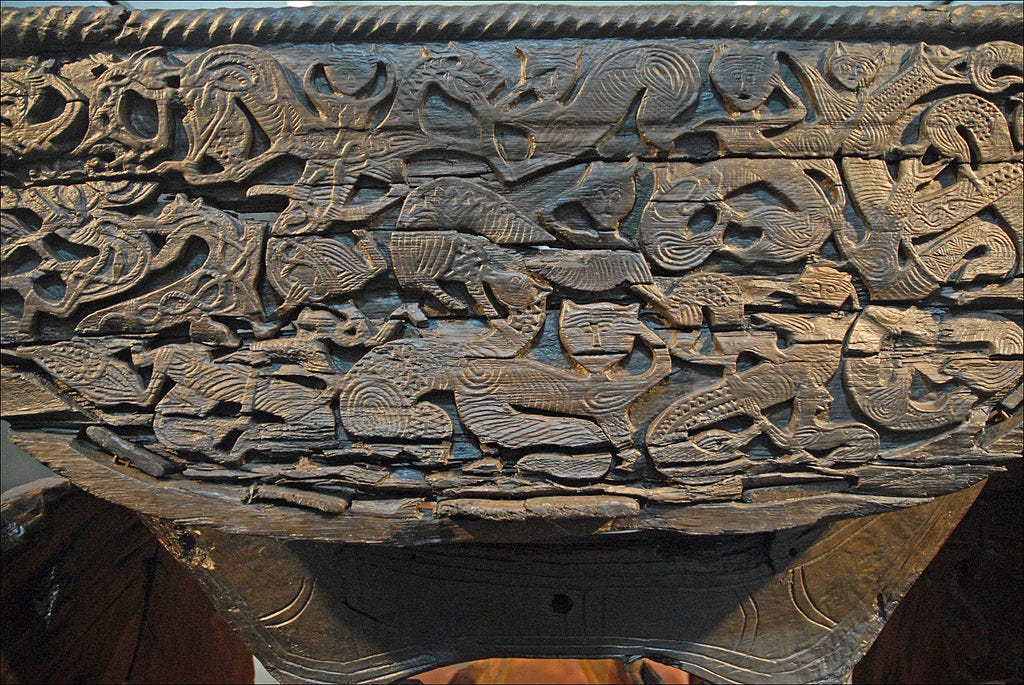
Ing and Ynglings
A final allusion to Freyr and wagons can be found in the entry for the ‘Ing’ rune in the Old English Rune Poem, describing the Anglo-Saxon Futhark:
ᛝ Ing was first amidst the East Danes So seen, until he went eastward Over the sea. His wagon ran after. Thus the Heardings named that hero.
‘Heardings’ is related to ‘Hadingus’, the legendary Danish king who first instituted the seasonal sacrifice to Yngvi-Freyr. The poem may relate to Ing the deity, brought to England upon his wagon by Anglian settlers, or to an euhemerised figure. In the latter case, Snorri’s Ynglingasaga describes exactly this: Yngvi-Freyr is a human sacral king of the Swedes, and describes how ‘the name of Yngvi was for a long time afterwards kept in his line as a name for kings, and his race were thereafter called Ynglings.’ In this guise he was veraldargoð - god of the world. After he died, his people raised a great mound where he was worshipped as a god, the folk bringing blood-offerings along with gold and other precious metals. Given that Freyr supposedly erected a great shrine at Uppsala and made his chief residence there, we may assume that the ‘great mound’ in which he was interred is one of Old Uppsala’s royal burial mounds.
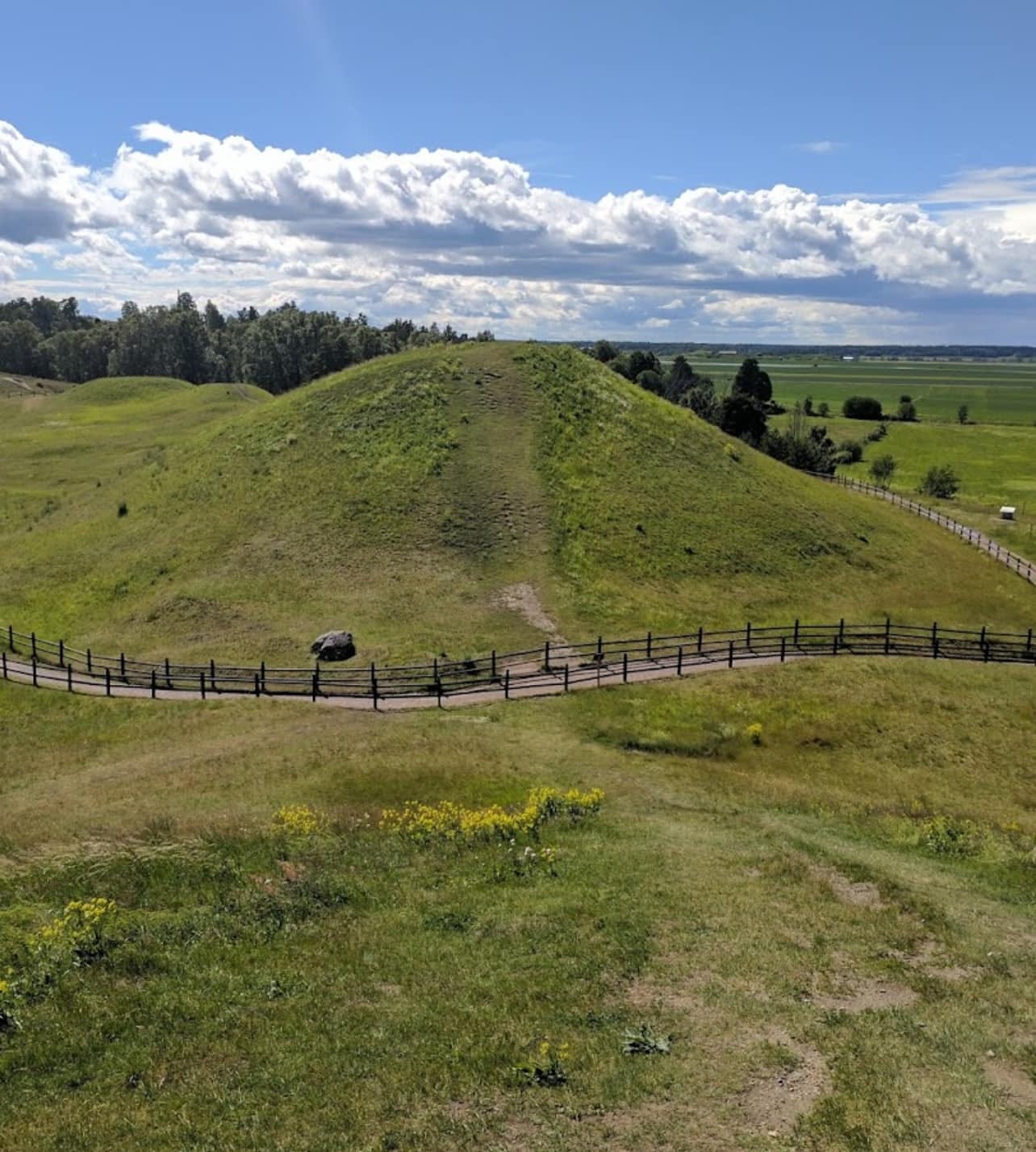
Freyr the Chthonic Lord
This is Yngvi-Freyr’s priest-king aspect; the sacral king who both rules and leads the seasonal rites and blóts to ensure the land’s fecundity. This is evident in the fates of the Ynglinga line of Swedish kings descended from Yngvi-Freyr: King Dómaldi was ritually slaughtered in order to ensure the fertility of the crops; King Óláfr trételgja (Olaf the Tree-Feller) was burned alive for the same purpose; and the corpse of Halfdanr Svarti (Halfdan the Black) was distributed across four districts because of the belief that it would ensure good harvests.
Freyr’s fate as a human king also alludes to his role as lord of the dead and of Álfheimr, the realm of the elves. Apotheosised in death as a god, but now a resident of the grave mound – the hollow hill – he has shaman-like taken the journey into the earth to become the ‘king under the hill’; chthonic ruler of the otherworld; of the ancestral dead and the Álfar. In doing so, Freyr ensures his royal descendants are forever in possession of ancestral wisdom and otherworldly sanction.
In the next essay we’ll look at the core of Yngvi-Freyr’s mysteries: his relationship to Freyja, his marriage to the jötunn Gerðr, the symbolism of ‘barley’ and his status in Old Norse’s phallocentric sorceries.
It’s a new theory as far as I know. I agree with certain conclusions drawn by Maria Kvilhaug, but my thesis is fundamentally different.
Grímnismál describes how Álfheimr was gifted to Freyr as a ‘tooth gift’.
Although Gylfaginning mentions that Álfheimr is the abode of the Light-Elves and is located in the ‘third heaven’, Kormáks saga describes how the elves have their haunt beneath a hill.
See the ‘Ingwaz’ entry in Futhark, a handbook of rune magic by Edred Thorsson (1984).
Heimskringla, Ynglingasaga, ch 4.
Njörðr is also acknowledged as a god of wagons.
This is a very crude summary of Heathen Gods in Old English Literature by Richard North (1997).





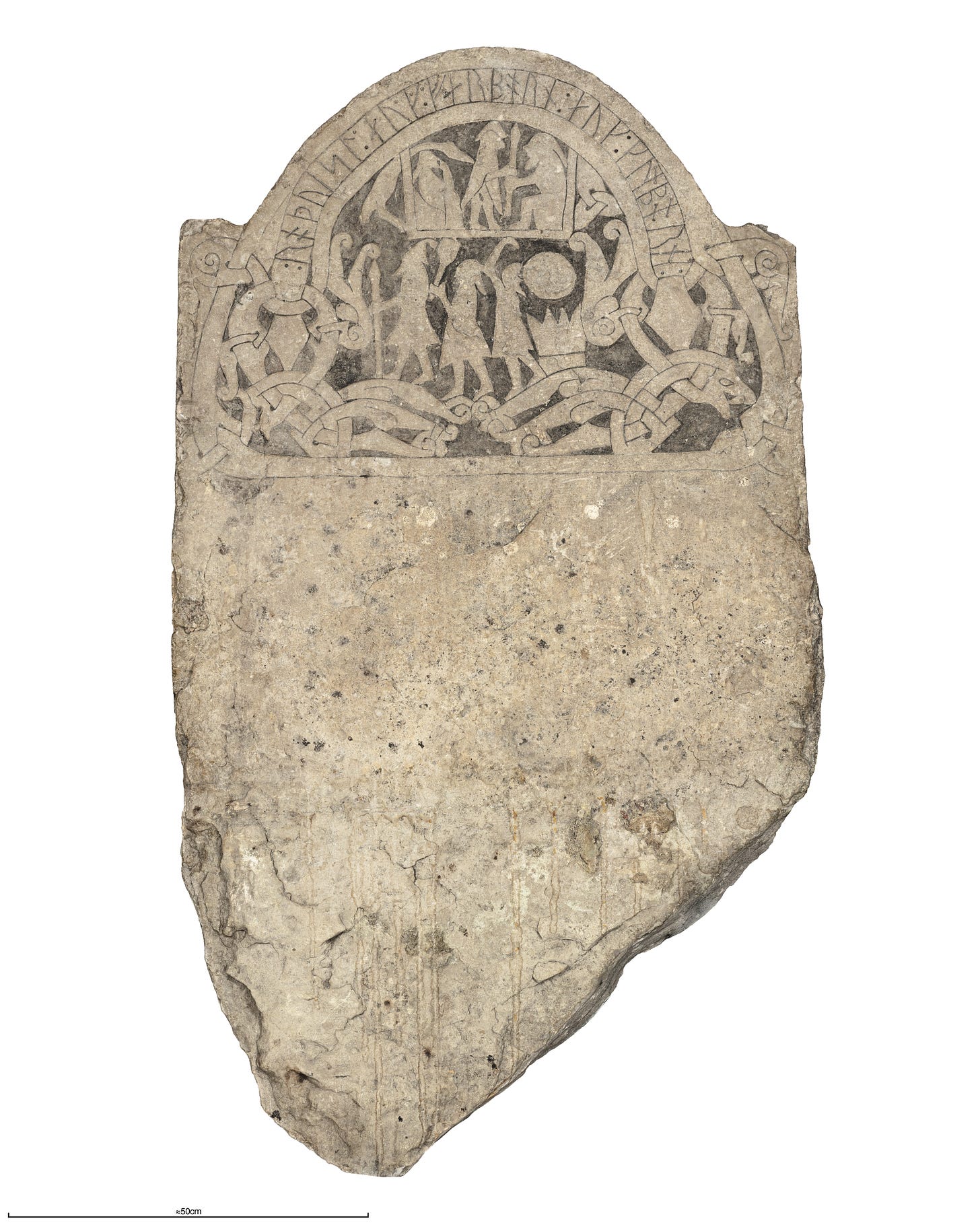
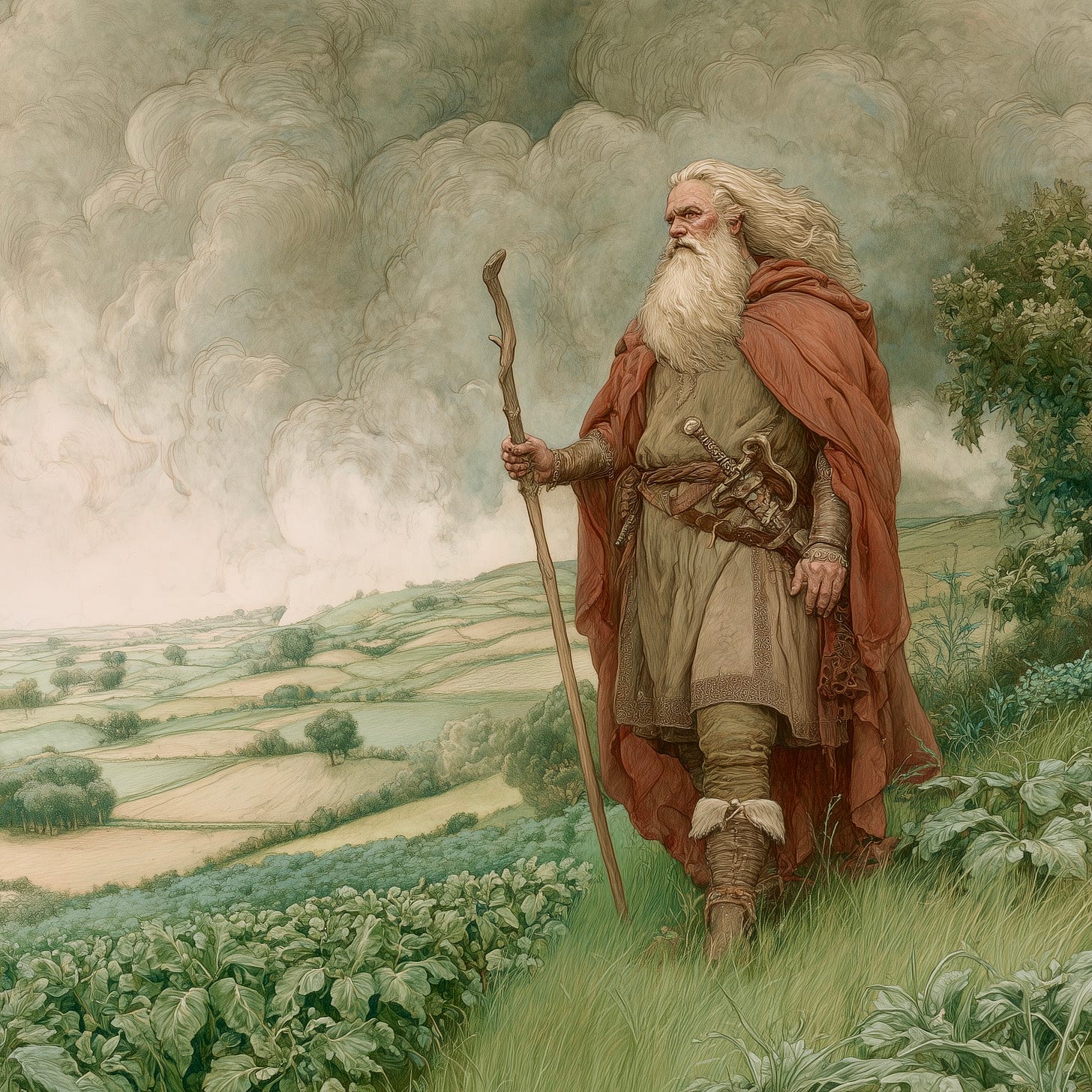

Loved this post, very excited for the next one